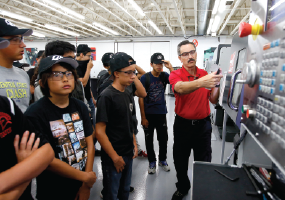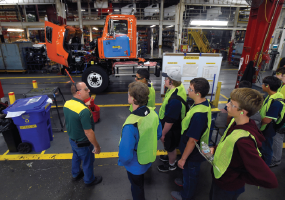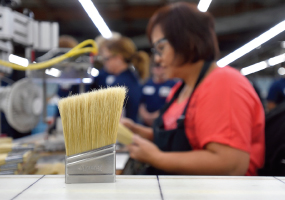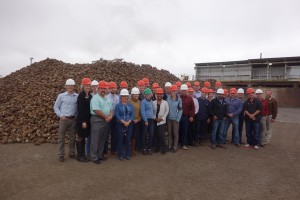In this Capitol Report:
This Capitol Report is brought to you by:
State Policy News
CACI Member Feedback Needed on 2016 Pinnacol Assurance Legislative Proposal
CACI staff recently met with representatives of Pinnacol Assurance to discuss a legislative proposal that will be introduced during the 2016 Legislative Session. Pinnacol Assurance is Colorado’s insurer-of-last-resort for workers’ compensation coverage and serves thousands of companies across the state, including many CACI members.
Based on Pinnacol’s partnership with many CACI members, CACI is seeking feedback from its members to determine whether your company has questions or concerns with this proposal, which is outlined below:
- The proposal would amend current statute to allow Pinnacol to establish a subsidiary wholly owned by Pinnacol that would provide workers’ compensation coverage and related products and services to Colorado companies that operate outside of Colorado and that have out-of-state employees;
- Pinnacol’s investment in the subsidiary would be 3 percent or less of its admitted assets that would be subject to the current statutory restrictions as Pinnacol’s other investments;
- The subsidiary would be a taxable, for-profit entity with a separate board of directors;
- No statutory language is being proposed to change the current structure of Pinnacol, which will remain as follows:
- Colorado state authority operating as a nonprofit mutual insurance company;
- Carrier of last resort (must accept all comers);
- Board of directors appointed by the governor; and
- Employees participate in PERA.
Pinnacol has also provided CACI with a Q&A document to explain its proposal.
The feedback CACI receives regarding this proposal will help determine CACI’s position on this legislation once it is introduced during the 2016 Legislative Session. Please provide comments to Loren Furman, CACI Senior Vice President, State and Federal Relations, at 303.866.9642.
Manufacturing Initiative
NAM Reports on Manufacturing Day
Last Friday, was Manufacturing Day, sponsored by the National Associate of Manufacturers (NAM), which is mutually affiliated with CACI. Here as a report from NAM about the nationwide event:
|
CACI Federal Policy Council Discusses GMOs, Tours Western Sugar’s Fort Morgan Processing Facility
On Tuesday, CACI’s Federal Policy Council held a unique, off-site meeting for its members to hear from Senate staff and experience first-hand one of the state’s longest-running manufacturing processes and oldest industries: producing granulated sugar from sugar beets.
Guest speakers, Chuck Poplstein, State Director for U.S. Senator Cory
Gardner (R-CO), and Danielle Osler, Special Advisor for Business Affairs for U.S. Senator Michael Bennet (D-CO), talked about the political environment facing Congress between now and the end of the year.
CACI members should particularly watch changes likely to follow leadership elections and the retirement of House Speaker John Boehner (R-OH). Both staffers encouraged attendees to share ideas, pressing issues, challenges and successes with their senators. They predicted the Senate will still likely attempt to address long-term highway fund authorization, cybersecurity and the National Defense Authorization Act as well as negotiating a change in the “debt ceiling” (amount Congress can legally spend), as well as facing a December 11th deadline to fund operation of the Federal our Government through a Continuing Resolution (CR).
Western Sugar
Western Sugar has operated in Colorado for more than 100 years, celebrating its centennial anniversary in 2006. Western Sugar President Rodney Perry spoke to the Council about the legacy of the sugar beet industry, the success of their farmer-owned co-op, and how sugar beet farming means they have contributing growers from across the entire state of Colorado.
In fact, Western Sugar Cooperative has 135,000 base acres that are spread across Colorado, Nebraska, Wyoming and Montana. “Our farmers are some of the best and most passionate environmentalists because this land is both their home and their lives. Some of our growers are fourth- and fifth-generation growers who want to make sure the healthy land and their way of life can be passed on to healthy children. In other words, they don’t want to screw it up,” said Rebecca Larson, Ph.D. Agronomist for Western Sugar.
Perry and Larson both addressed the challenges the sugar-beet industry faces: increasing regulatory burdens for production, water and land use restrictions by the EPA, and consumer trends that aren’t reflective of science.
Fast fact: The manufacturing process for sugar beets means extracting sucrose out of the beets rather than adding anything to them. Hot water and waffle-fry-looking slices are made to extract, then the sugar is crystalized into pure crystals and dried. Chemically and structurally, there’s no difference between sugar from a sugar beet grown organically or conventionally. Likewise, there’s no difference between sugar crystals coming from a “Roundup Ready” sugar beet seed or “non-GMO” seed.
Larson also talked about why Western Sugar chooses to use GMO seeds to be environmentally responsible:
- GMO beet seeds allow for 30 percent greater yield per acre;
- Three times less water is used for Round-up Ready seeds vs. conventional sugar beet seeds;
- GMO beets only need the equivalent of a Coke-can sized application of pesticides in a season (over a field the size of a football field);
- Conventional seeds require three times to four times as much pesticide, herbicide and fungicide applications and need to be applied as many as two-to-three times per season; and
- With fewer applications of chemicals, GMO seeds reduce the amount of times farm vehicles need to pass through the fields, reducing both fuel emissions and ground impact.
More than 30 Council members in attendance for the tour of the Ft. Morgan facility, which also included Fort Morgan Mayor Terry L. McAlister, two Morgan County commissioners, Colorado State Representative and House Agriculture Chairman K.C. Becker as well as the Field Representative and District Director from Congressman Ken Buck’s office and Field Representative from Congressman Jared Polis’ office.
Attendees got to see a fresh-picked sugar beet from the field, beets as they were delivered to the facility (25 tons at a time), the washing, slicing, testing processes, quality control, growing crystals, drying and final products of granulated and powdered sugar.
For more information about the Federal Policy Council, contact Leah Curtsinger, CACI Director of Federal Policy, at 303.866.9641













